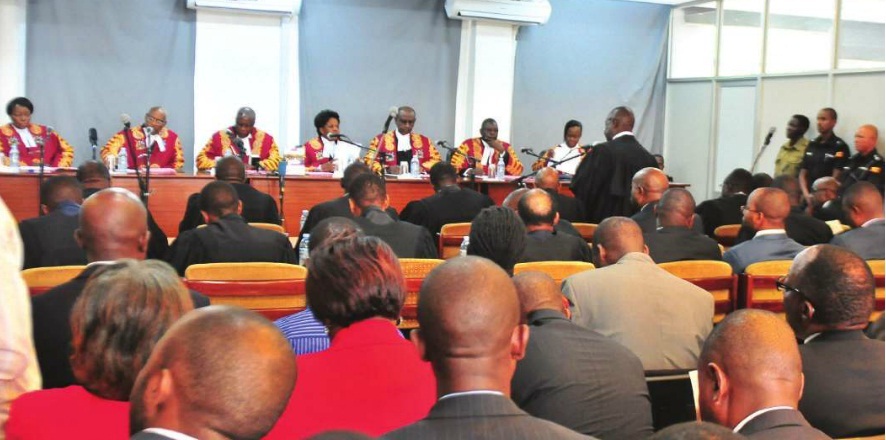MBABAZI EVIDENCE: Behind the scenes on how it `disappeared’
We find no cogent evidence of noncompliance. There is no evidence whether the ballot papers were actually cast as alleged. We find no evidence of multiple voting because the allegations could not be verified, given the nature of the evidence adduced before us. If the two-hour ruling of Chief Justice Bart Katureebe in the petition by former presidential candidate Amama Mbabazi against the re-election of the incumbent, President Yoweri Museveni, can be summed up, it would take two words: No evidence. “We find no evidence. We find no evidence,” Katureebe intoned to the packed court on March 31, exactly 17 days after he lead a panel of nine Supreme Court justices to expeditiously hear the petition are required by the constitution.
*********

Days after the historic ruling, however, The Independent has received information that the story of how Mbabazi’s evidence against Museveni’s re-election `disappeared’ might, in fact, be the biggest story of this election.
Investigations continue, but The Independent can report some of what has emerged so far. Museveni was declared winner of 60% of the vote on Feb. 20. But the story of the disappearing evidence starts the day before, on Feb. 19. And it does not start with the petitioner, Mbabazi, but with Museveni’s biggest challenger, Kizza Besigye and his Forum for Democratic Change (FDC) party.
On that day, FDC called a press conference at its headquarters in Najjanankumbi in Kampala. The FDC leaders said they wished to comment on the tallying of votes that was still ongoing and release their own results that were different from what the Electoral Commission chairman, Badru Kiggundu was announcing. But before the press conference could start, heavily armed police swooped on the venue, the FDC headquarters at Najjanankumbi in Kampala, and with police choppers flying overhead, fired teargas, and arrested Besigye, party president Mugisha Muntu, and other leaders.
From that moment, Besigye was kept incommunicado, and under virtual house arrest until April 3, when police lifted the cordon around his home in Kasangati, near Kampala, in Wakiso district. Almost simultaneously, Mbabazi’s home was also sealed off by heavily armed police.
Even little-feared former candidates like Abed Bwanika were kept under surveillance. So what was the government afraid of?
The Independent has learnt that Besigye who has run against Museveni three times and disputed the results in all of them was this time ready to expose vote rigging with evidence. For the purpose, FDC had deployed to gather data and video evidence of malpractices.
Apparently, FDC’s data showed that of the about 20,000 DR forms they had, inconsistences were in about 12,000. The FDC also had hired data crunchers. In total, the statisticians were allegedly later to show that over 1.5 million votes were subtracted from Besigye’s final tally.
With all opposition leaders neatly locked away, Museveni and the EC hoped no such contrasting evidence would emerge. They had 10 nail-biting days to see if Besigye, who won 34% of the vote, would petition court against the results. Besigye had said he would not return to court where his case had been thrown out twice; in 2001 and 2006. And he did not even though some lawyers had already started preparing his petition.
Instead, in a surprise move, it was Mbabazi – who had barely scraped 2% of the votes- who lodged a petition.
 The Independent Uganda: You get the Truth we Pay the Price
The Independent Uganda: You get the Truth we Pay the Price




One comment
Pingback: Mbabazi’s evidence on Museveni election – Twinobusingye Severino Advocates